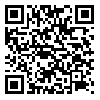BibTeX | RIS | EndNote | Medlars | ProCite | Reference Manager | RefWorks
Send citation to:
URL: http://jhsw.tums.ac.ir/article-1-5707-en.html
2- Associate Professor, Department of Occupational Health Engineering, School of Public Health, Tehran University of Medical Sciences, Tehran, Iran ,
3- Assistant Professor, Department of Psychology, Alzahra University, Tehran, Iran
4- Professor, Department of Epidemiology and Biostatistics, School of Public Health, Tehran University of Medical Sciences, Tehran, Iran
Introduction: Teaching has been reported stressful. Although, the majority of teachers aren’t anxious or unmotivated and they even consider their job valuable and satisfying. Job demands-resources (JD-R) is a comprehensive model in occupational stress domain that simultaneously examines the stressful and motivational aspects of occupations and their related outcomes. Accordingly, the objective of this paper is to investigate job characteristics of teaching (job demands and job resources) and their subsequent outcomes by utilizing proposed model.
Material and Method: This study was a cross-sectional design among 247 high school teachers in Tehran city who were selected by two-stage cluster sampling in spring and summer of 1391. Three aspects of job demands (pupil misbehavior, work-family conflict, and cognitive demand), 2 aspects of job resources (supervisory support and job condition), emotional exhaustion, vigor, teacher’s illness symptoms, and organizational commitment were assessed using job demands-resources model. The data were analyzed by means of SPSS 21 program and path analysis by using AMOS 23 program.
Result: According to the results, model fit indices were in acceptable range and all the coefficient paths were significant (p<0.001). Considering model, Job demands were a better predictor for emotional exhaustion (β=0.3) than job resources (β=0.2). However, they had an equal but opposite impact on vigor (β=±0.27). Moreover, we observed partial mediation relationships between job demands and illness symptoms and job resources and organizational commitment via emotional exhaustion and vigor respectively.
Conclusion: Based on the findings, fostering initiatives with priorities of firstly regulating job demands and secondly improving job resources can be effective strategies to reduce job related burnout and promoting job engagement, health and organizational commitment of teachers
Received: 2017/09/20 | Accepted: 2017/09/20 | Published: 2017/09/20
| Rights and permissions | |
 |
This work is licensed under a Creative Commons Attribution-NonCommercial 4.0 International License. |





